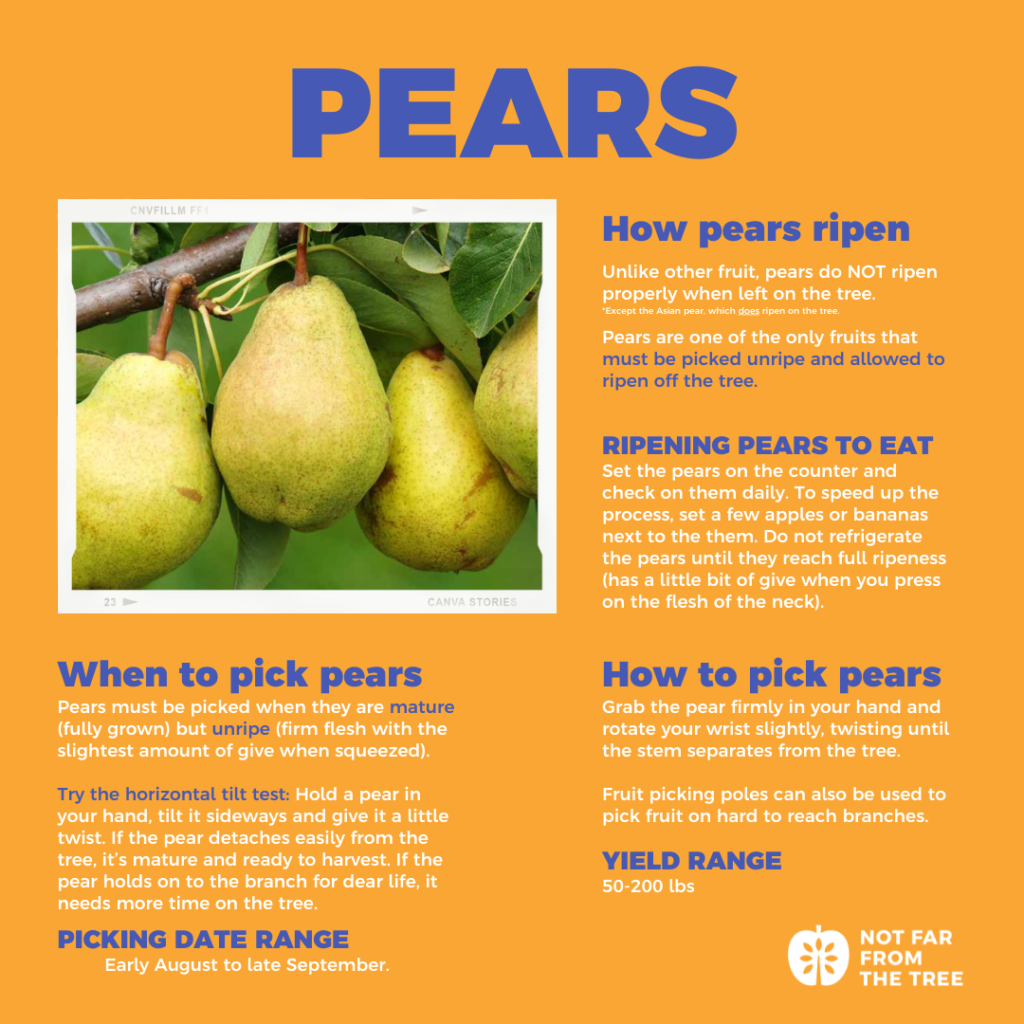Ripening Guide
Learn more about the many fruits of Toronto's Urban Orchard
Pears
Pears are a delicious, nutritious Toronto treat, that are packed with antioxidants, flavonoids, and dietary fiber. Pears are teardrop shaped or round, and can be green, yellow, brown, red or a combination of these colours when mature.
- August
- September
How to tell when pears are ready to harvest: When pears are still firm but have the slightest amount of give when squeezed, and when they pass the horizontal tilt test: Hold a pear in your hand, tilt it sideways and give it a little twist. If the pear detaches easily from the tree, it’s mature and ready to harvest. If the pear holds on to the branch for dear life, its not ready yet.
Pears should be harvested before they are ripe! They ripen from the inside out, so by the time they seem ripe on the outside, they are likely to be mushy or gritty on the inside.
Picking tips: Grab the pear firmly and twist and roll it until the stem separates from the tree. Fruit picking poles can also be used to pick fruit on hard to reach branches.
Storage tips: Leave pears at room temperature to let them soften and sweeten. It can take anywhere from a few days to a few weeks for pears to ripen. If you want them to ripen faster, store them in a paper bag, or with an apple or banana. If, on the other hand, you want the pears to last longer, store the freshly picked fruit in the refrigerator.
Pruning Tips
Pears grow really vertically. To make sure your tree doesn’t get too high and un-pickable, you’ll have to prune to work against this vertical growth. The first thing you want to do is decide how high you want it. Keep in mind that trees that haven’t been pruned in many years shouldn’t be reduced to the desired height in a single pruning. You should plan on reducing the height over a period of 3 years by removing no more than ⅓ of the tree in 1 season.
Your goals for pruning pear trees are to reduce the height, remove unproductive wood, and thin out branches that are crossing, shading or clustering each other. Follow the tips outlined in Pruning 101. Remove the 3Ds: dead damaged and diseased wood, and follow the CAC rule – remove any crossing, acute, and clustering branches
Pear trees do best when pruned to a central leader. You want to establish solid scaffold branches (the main, horizontal branches) that grow out from the central leader. There should be about 4-6 scaffold branches distributed evenly around the tree, about 4 feet in height vertically from one scaffold to the next. To control the height, cut back your central leader (the main stem) to just above the top scaffold.

-
Have a Pear Tree? Register it Here.
-
Want to pick Pears? Join our Team.

